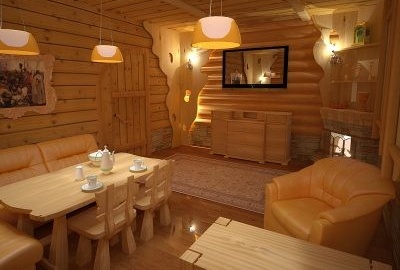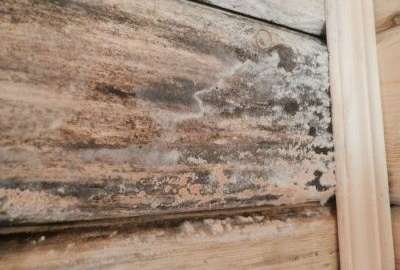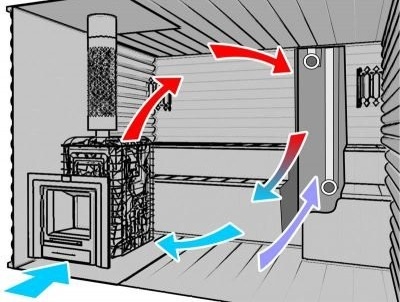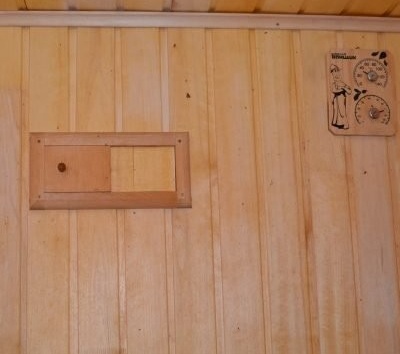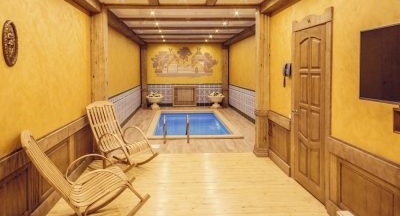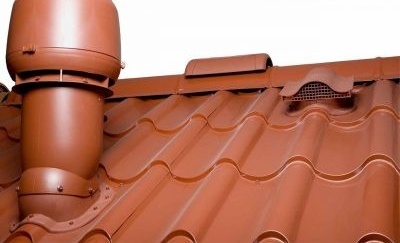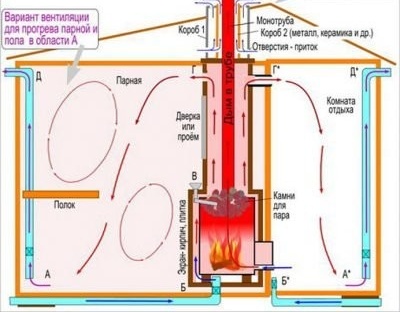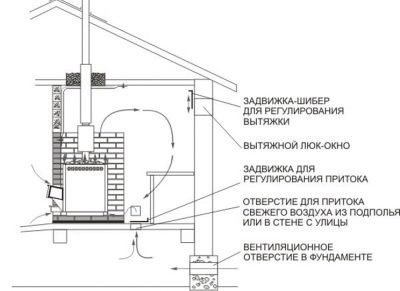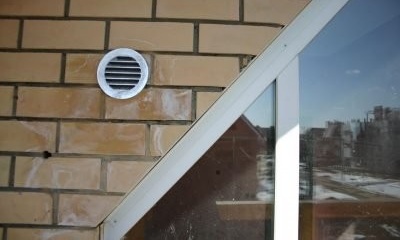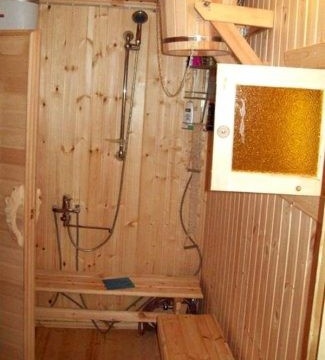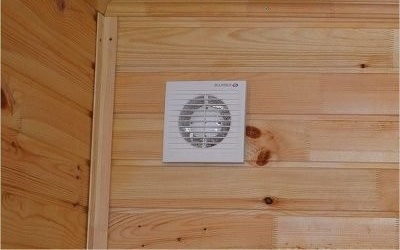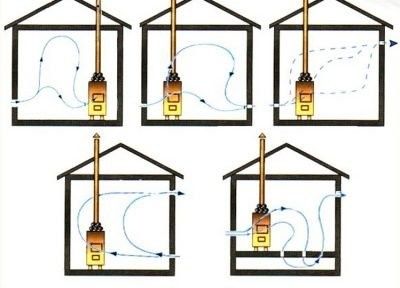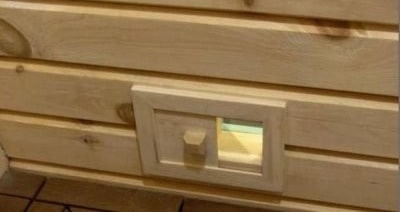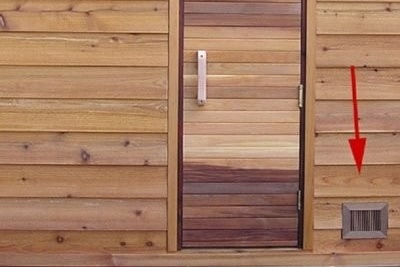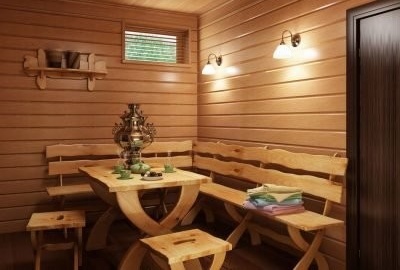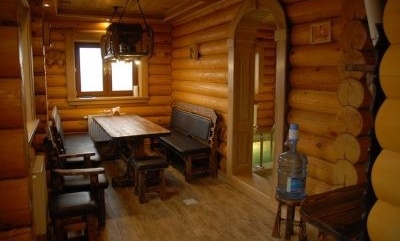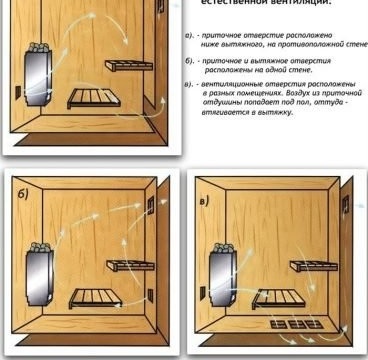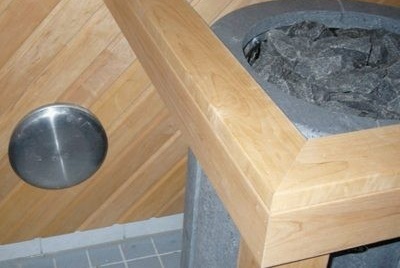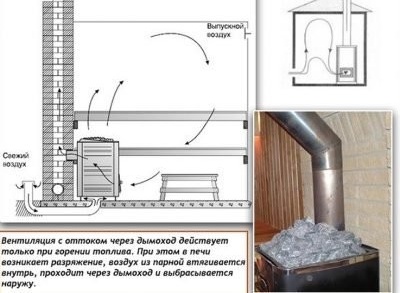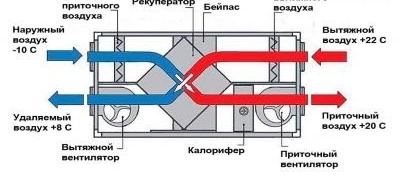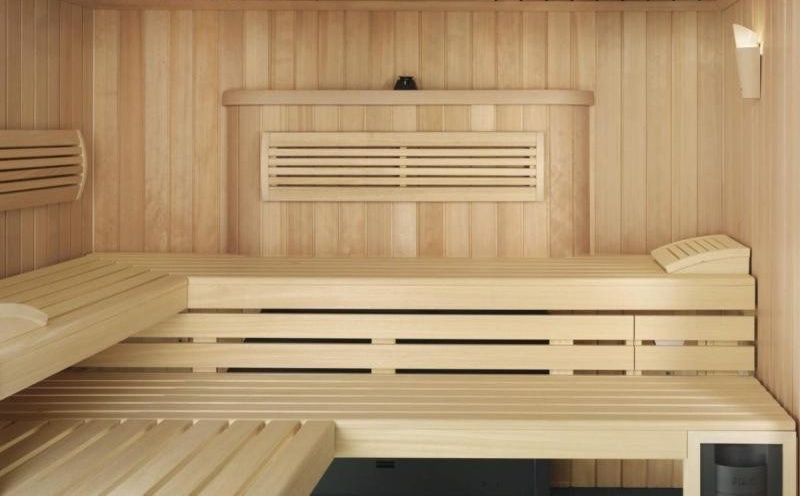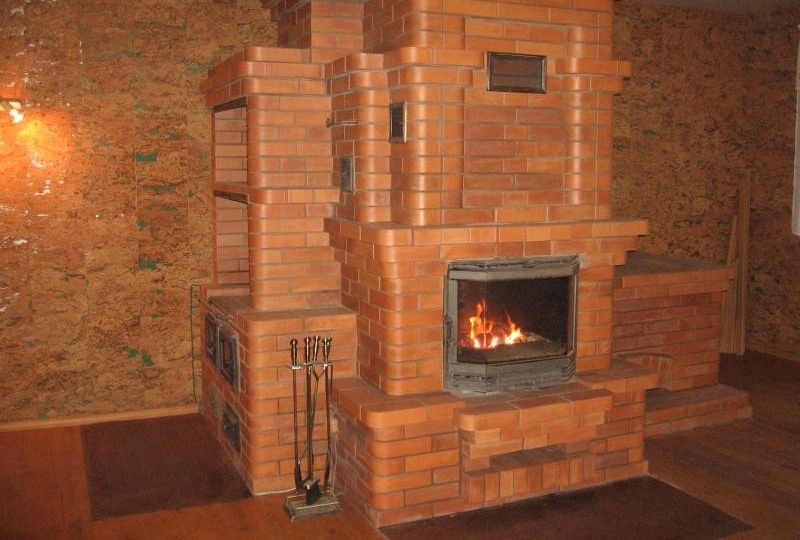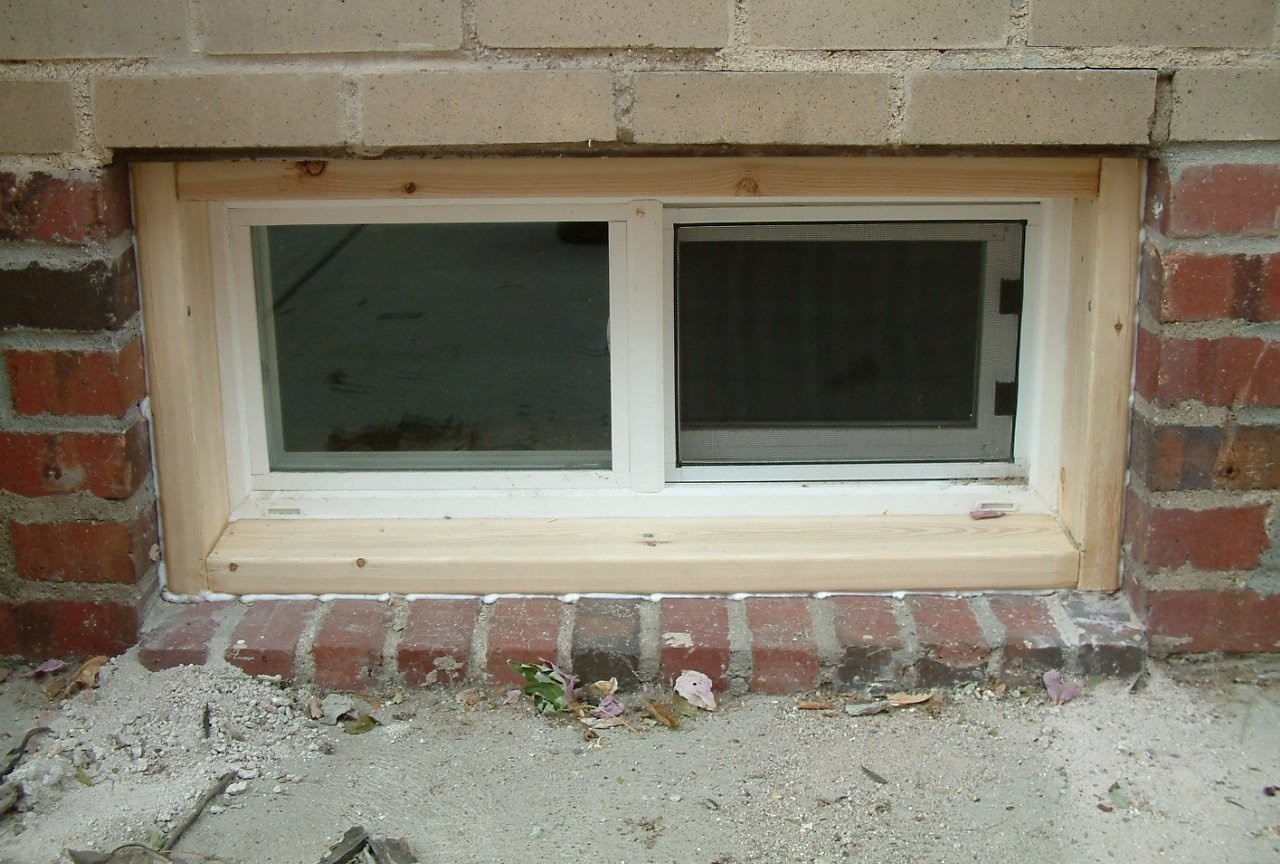Ventilation in the bath - design features and practical recommendations
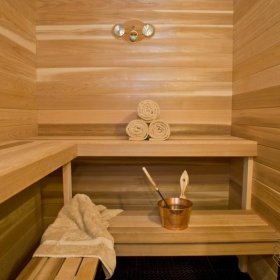
The proper organization of air exchange in the bathhouse is a serious task that requires a professional approach. It is not enough to build a bathhouse, finish the interior, install heating equipment and furniture. It is important to ensure effective ventilation of the bathhouse premises, to create a favorable microclimate that allows you to enjoy water procedures and contributes to the long life of the decoration, as well as the entire structure.
Content
Ventilation in the bathhouse is the key to comfort
Relaxing in the bath will be a pleasure if you breathe easily and comfortably in the room.
If there is a violation of proper air exchange or in the complete absence of ventilation in the steam room, it will be difficult to breathe and impossible to stay for a long time.
To create a comfortable microclimate allows the ventilation system to ensure the supply of oxygen-saturated air and the withdrawal of "exhausted" air masses.
The traditional layout of the bath complex includes a dressing room, a washing department, as well as a relaxation room, and everywhere it is important to ensure effective air circulation.
An increased concentration of moisture does not give pleasure both during water procedures and during rest. The human body is sensitive to a lack of oxygen and high humidity.
The conclusion is clear: in the bath you need to do good ventilation so that it is pleasant and comfortable not only to bathe, but also to relax.
Violation of air circulation or lack of ventilation causes:
- The formation of mold, which reduces the life of the decoration materials and insulation.
- Unpleasant odors.
- Increased concentration of harmful fumes.
Types and principles of ventilation
For any type of bath (Russian, Finnish sauna, Turkish hammam) ventilation is provided, which can be carried out in different ways.
Natural air exchange
The principle of convection air flow formation is based on the difference in temperature and air pressure from the street side and inside the bathhouse.
Maximum air exchange efficiency is achieved due to the correct location of the supply and exhaust ventilation ducts.
The traditional arrangement of air channels is used to ventilate the rooms of the Russian bath and sauna. The supply air duct is located at a distance of 0.2–0.3 meters from the floor, and the exhaust duct is at the same distance from the ceiling. Adjustment flaps in the room should be provided to optimize air flow and ensure a comfortable temperature regime.
Natural ventilation should provide air exchange, maintaining the room temperature and not creating discomfort during the rest. The advantages of natural air exchange are simplicity and low costs associated with the lack of the need to purchase expensive equipment.
Combined Option
The method of organizing the movement of air masses in a room using a fan that provides circulation is called a combination. In this case, there is no pattern in the location of the ventilation ducts.
The ventilation scheme is determined individually and provides for the installation of an outlet and a channel equipped with a fan, which is mounted on the supply line or exhaust channel and creates the necessary pressure difference.
The provision of air exchange in the rooms of the bathhouse by a combined method is convenient and economically justified.
Forced circulation
The forced air exchange system is also called mechanical. The system is equipped with automation elements that monitor the temperature regime, adjust humidity and the intensity of circulation of air masses.
Forced air exchange provides maximum comfort.
Increased costs associated with the acquisition and installation of equipment, as well as difficulties in maintenance, limit the use of mechanical air exchange in small bath rooms.
For rooms with an increased area, forced circulation is used if natural or combined air exchange is not effective.
The following types of mechanical ventilation are used:
- Exhaust, equipped with a filter element and fan. This type of ventilation provides effective removal of unpleasant odors and polluted air masses from rooms with pools, washing departments and rest areas. The use of an exhaust system needs to ensure the supply of fresh air necessary to compensate for the vacuum created by the fan.
- A supply air supplying oxygen-rich air. Due to the increased pressure, air-saturated masses leave the room through the ventilation ducts, as well as through the existing gaps in the doors and windows. The combination of the supply line with the heating device allows you to supply fresh heated air. The design of the supply air exchange is more complex.
- Supply and exhaust uniting the principle of supply and exhaust ventilation. The use of this principle of ventilation in the sauna room requires preliminary calculations. The intensity of circulation is determined on the basis that the volume of incoming air must correspond to the volume of displaced. In order to prevent the penetration of air from the bathroom into the rest area, the ratio is deliberately violated. This allows you to form a reduced pressure in the toilet room and direct additional flows into it.
The principles of organization of air exchange
When planning a ventilation device, follow these recommendations:
- Ensure that the bath room has equal volumes of incoming and outgoing air masses. Use dampers to help regulate circulation. Closing the dampers allows you to quickly warm up the steam room.
- Install an exhaust duct from the outside of the room, ensuring the location of the deflector at a height of more than 0.5 m above the top point of the roof. This requirement is mandatory for mechanical air exchange.
- Create the movement of air currents from the washrooms to the dressing room, bathroom or vestibule.
- Fix at the level of 1.5–2 meters from the zero mark the ventilation grille, which ensures the supply of external air during forced air exchange.
- Plan the outflow of humid air from the rest area through the bathroom or the wash compartment.
- On an individual ventilation ducts, extract air from a gas-fired water heater installed in the bath.
- Ensure that oxygen-enriched air enters the steam room through the ventilation channel located next to the sauna stove at a distance of no more than 0.5 m from the floor.
- Use the high temperature of the hot air leaving the steam room through the airways to additionally heat the auxiliary rooms. Laying of air ducts in the sink, dressing room and rest area will allow them to maintain a comfortable temperature.
- Install an exhaust duct equipped with a valve in the upper part of the room opposite the supply line.
- Use combined air exchange for circulation of air masses in a Finnish bath, including elements of forced air supply and natural ventilation.
Observing the above recommendations, you can provide a comfortable microclimate in the rooms of baths of any type.
It is important to correctly calculate the area of the ventilation ducts. The cross section of the vent and duct is determined by the size of the steam room, for each cubic meter of volume of which it is necessary to provide 24 cm2 the area of the ventilation duct.
For a comfortable stay in a heated steam room, provide the possibility of more than five-fold air exchange (the air in the steam room should be updated 5 times in an hour). The layout of the supply channel and exhaust duct, as well as their number, should facilitate easy circulation of masses in the steam room.
Effective air exchange will increase the life of wooden floors. To ensure it is necessary:
- drill small channels in the basement of the building to ventilate the floors;
- provide a guaranteed gap between the floor boards in the range of 5-10 mm;
- mop the floors after the bathing procedures and force all rooms to be ventilated.
The correct ventilation device will allow you to fully enjoy the steam room and get great pleasure from the bathhouse.
Video: ventilation in the bath
How to make ventilation in the bath do-it-yourself
The organization of air circulation in each room has individual characteristics.
Dressing room ventilation
A tambourine room or dressing room is used as a dressing room. The compartment is located away from areas with high humidity and temperature.
Using the front door contributes to the flow of fresh air and reliable ventilation of the locker room.
The location in the upper part of the wall of the ventilation grill with the valve will allow for natural air exchange and control the volume of incoming air masses.
During the construction of the building, it is necessary to provide a ventilation hole. If there is no air channel, then you need to do it yourself:
- Drill using a hammer drill or drill equipped with a special nozzle.
- Install the protective grill on the outside of the hole.
- Fasten the adjustable damper from the inside of the room.
Air in the washing
The washing compartment, in which the shower is installed, is ventilated due to the natural circulation of air flows moving from rooms with high humidity to ventilation outlets or small windows.
To increase ventilation efficiency and reduce humidity, it is advisable to equip the shower with an exhaust fan.
Install the fan according to the following algorithm:
- Drill a through hole in the wall corresponding to the size of the fan landing section.
- Fasten the protective grille on the street side.
- Screw the shower fan on the side using standard fasteners.
- Connect the electrical wires and check the operation of the device.
For ventilation of the washing room, use fans with an operating voltage of 220 volts, having a small power of 20-100 watts.
When purchasing a fan, pay attention to the possibility of the device working at elevated temperature and humidity, as well as to the degree of protection, which should not be lower than IP44.
Organization of air circulation in the steam room
For ventilation of the steam room, perform 2-3 channels designed for air exchange. One line will provide fresh air, and the rest will allow the exhausted air masses to leave the room unhindered.
Arrange the channels according to one of the proposed ventilation schemes.
Making holes at the construction stage will help preserve the integrity of the finishing materials and facilitate the work.
The area of the incoming line should correspond to the size of the output channel. However, it is possible to provide a more efficient convection flow by performing a slight increase in the diameter of the exhaust line.
A prerequisite is the installation of adjustable valves, allowing you to change the intensity of air exchange.
The implementation of measures for the arrangement of canals is not difficult:
- Drill holes according to the selected ventilation pattern.
- Install protective and decorative grilles from the outside of the room.
- Attach the slide gate valves or adjustable blinds to the channels inside the steam room.
Video: ventilation in the steam room
Creating a microclimate in the lounge
Comfortable temperature conditions and optimal air circulation in the relaxation room are achieved due to natural air exchange.
It is important to provide an air duct equipped with an adjustable gate valve or ventilation valve. This will, if necessary, increase the intensity of movement of air masses.
Drill a hole and install the valve is not difficult.
Video: manufacturing a vent valve
Options and layouts of ventilation channels
In the bath, you can use different options for the location of ventilation communications, providing for natural air circulation and the use of a fan.
One of the proposed schemes of natural air exchange, providing the following options for placing ventilation ducts, will provide a comfortable adoption of bath procedures:
- The inlet channel runs above the floor behind the stove. The exhaust pipe is placed in the ceiling area of the room on the opposite side of the steam room. This variant of the hole arrangement provides heating of the cold air entering the steam room upon contact with a preheated oven. The air masses enveloping the furnace gradually rise to the upper part of the steam room, circulate along the ceiling and gradually decrease, exiting through the exhaust line.
- The supply duct is located 0.3 m above the floor in the opposite zone from the preheated oven. In this case, the entry and exit of air masses is carried out through a slightly blown out blown stove heated up during operation and a chimney. This method provides air exchange in the room only during operation of the furnace.
- The hole of the inlet channel is made behind the furnace above the floor by 0.2-0.3 m from its surface. The function of the output channel is performed by gaps in the boards of the ventilated floor. The cold air masses entering the room are heated, in contact with a heated stove, and moved to the ceiling. The cold air located in the floor area is then forced out through the gaps between the boards and goes outside the building.
Achieve a favorable temperature and comfortable humidity allow air exchange schemes involving the installation of a fan:
- The inlet channel is located behind the heating device above the floor at a distance of 0.3 m, and the outlet is in the opposite zone above the floor by 0.2 m. The exhaust fan is mounted in the outlet channel and provides air exchange in the room.
- The exhaust ventilation duct and the inlet are located within the same wall in its upper and lower parts. On the supply line located 0.3 m above the floor level, a fan of the required capacity is mounted.
- The inlet is made at a distance of 0.3 m from the lower mark behind the heating device and is equipped with a fan. The hood is carried out in the lower part of the opposite wall at a distance of 0.2 m from the surface. The incoming fresh air during circulation is heated by a preheated oven and smoothly distributed throughout the steam room. Gradually cooling, the air masses sink to the floor and leave the room through the exhaust duct.
Remember that determining the performance of a fan installation is done by multiplying the volume of the steam room by the air exchange coefficient.
For example, to determine the required air exchange in a steam room with an area of 10 m2having a height of 2 meters, it is necessary to multiply the volume by an air exchange coefficient equal to 5 (we already said above that in the steam room the air should be completely updated 5 times per hour). The resulting fan performance value is 10 x 2x 5 = 100 m3/ h
Heated air ventilation
Providing air exchange while heating the incoming air is carried out in the bath in various ways. They include the use of a fan or natural air exchange. For example, by locating certain air channels in the immediate vicinity of a hot stove, it is possible to simultaneously inflow oxygenated air and increase its temperature due to the heated surface of the heating unit.
In order to create a favorable temperature regime, comfortable humidity and smooth heating of the incoming air masses, it is necessary to use plugs or shutter dampers located on the air lines. To carry out ventilation while simultaneously heating the air is a rather difficult task.
Each heating unit has its own individual "character". Only as a result of experiments, it is possible to select the optimal air exchange mode and ensure a comfortable temperature in the bathhouse.
To increase the temperature of the incoming air masses, you can use an electric air heater that heats the air entering the room. This is another option for air ventilation with simultaneous heating.
The power of the electric heater is selected experimentally.
Electrical equipment used in the premises of the bathhouse must withstand elevated temperatures and humidity, be properly grounded and have a protection class of at least IP44.
Combining air ventilation with heating allows you to create comfortable conditions for vacationers, as well as reduce the costs associated with heating the room using heating equipment.
Familiarity with the principles of organizing proper air circulation in the steam room, as well as the rest of the sauna and bathhouse, will allow you to independently organize the process of effective air exchange. It is important to correctly calculate the size of the air lines and optimally place the channel inlet openings in the rooms. Remember that the design of the heating device and chimney additionally affects the degree of air circulation. Following the recommendations, you can avoid mistakes and enjoy the wellness treatments in the bath with a comfortable microclimate.

